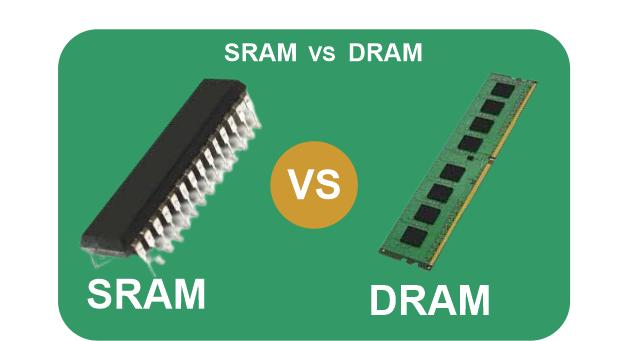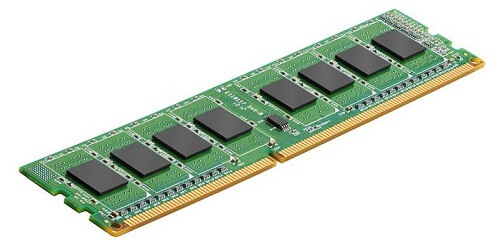Difference Between SRAM and DRAMStatic Random Access Memory (SRAM) and Dynamic Random Access Memory (DRAM) are two types of Random Access Memory (RAM) used in computers to store data temporarily. They differ in terms of design, operation, and performance, which affects their suitability for various applications. 
What is SRAM?SRAM (Static Random-Access Memory) is a type of memory that does not require refresh cycles as DRAM (Dynamic Random-Access Memory) does. In an SRAM cell, data is stored on a flip-flop circuit that maintains its state as long as power is supplied. This makes SRAM faster and more reliable than DRAM. SRAM does not need to access the memory cell array to retrieve data, which makes it faster than DRAM and results in lower latency. What is DRAM?
DRAM, on the other hand, uses a different design that stores data as a charge on a capacitor. The charge in the capacitor decays over time and must be constantly refreshed to maintain the stored data. This process of refreshing the memory cells consumes a significant amount of energy and results in slower access times and higher latencies compared to SRAM. Difference between SRAM and DRAMOne of the key advantages of DRAM is its high density, which means that it can store more data per unit of area than SRAM. This makes it ideal for large-scale memory applications such as main memory in computers, where cost and capacity are more important than speed. Additionally, DRAM is less expensive than SRAM because its memory cells are simpler to manufacture and are easier to integrate into larger memory modules. 1. Difference in terms of Performance In terms of performance, SRAM is generally faster than DRAM, with access times of a few nanoseconds, compared to tens of nanoseconds for DRAM. This speed advantage makes SRAM a better choice for high-speed cache memory, where fast access times are critical. The smaller size of SRAM cells also makes it more suitable for use in high-speed circuits and other applications where power consumption is a concern. 2. Difference in terms of Efficiency DRAM has the advantage of being more energy-efficient than SRAM. The need for constant refreshing means that DRAM consumes less power than SRAM, making it more suitable for use in devices that need to conserve energy, such as laptops and mobile devices. Additionally, the lower cost of DRAM makes it more affordable for large-scale memory applications, such as main memory in computers, where cost is a major consideration. 3. Difference in terms of Types There are also different types of SRAM and DRAM, each with its own unique features and benefits. For example, there is Synchronous DRAM (SDRAM), which synchronizes its internal operations with the clock speed of the computer to achieve higher performance. There is also Rambus Dynamic RAM (RDRAM), which uses a high-speed bus to transfer data between the memory and the CPU.
This table highlights the key differences between SRAM and DRAM, including their memory cell design, data retention, access speed, reliability, power consumption, cost, capacity, and ideal use. The choice between the two types of memory depends on the specific requirements of the application and the balance between performance, cost, and power consumption.
Next TopicDifference between
|
 For Videos Join Our Youtube Channel: Join Now
For Videos Join Our Youtube Channel: Join Now
Feedback
- Send your Feedback to [email protected]
Help Others, Please Share










